Every year I eagerly await the release of the lists of books up for discussion at the ALSC Notable Children’s Books and YALSA Best Fiction for Young Adults committees at the American Library Association Annual Conference. I want to see which of the books I have read and thought worthy of “best books” recognition are up for discussion, but I am most interested in the books on the lists I haven’t read. I’m now busy catching up on reading these books that leave me asking, “How did I miss this one?”
Ages 4–8
Glow: Animals With Their Own Night-Lights. W.H. Beck. 2016. Houghton Mifflin Harcourt.
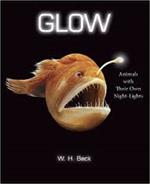 Stunning color photographs and a fascinating text in white print against a black background introduce young readers to some of the strange living things that glow—things that make their own light. From fireflies that flash their lights in the air and one-celled dinoflagellates that float in the ocean to a wide variety of small and large animals that live deep underwater, these life forms share the special adaptation of bioluminescence. Beck covers how these organisms glow and what scientists have discovered as to why they glow. An appended chart includes outline drawings of the life forms, highlighting where the bioluminescence occurs, common and scientific names, sizes, and where they are found in nature.
Stunning color photographs and a fascinating text in white print against a black background introduce young readers to some of the strange living things that glow—things that make their own light. From fireflies that flash their lights in the air and one-celled dinoflagellates that float in the ocean to a wide variety of small and large animals that live deep underwater, these life forms share the special adaptation of bioluminescence. Beck covers how these organisms glow and what scientists have discovered as to why they glow. An appended chart includes outline drawings of the life forms, highlighting where the bioluminescence occurs, common and scientific names, sizes, and where they are found in nature.
¡Olinguito, de la A a la Z!: Descubriendo el Bosque Nublado=Olinguito, from A to Z!: Unveiling the Cloud Forest. LuLu Delacre. 2016. Lee & Low.
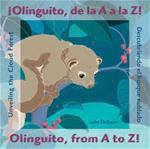 With an alphabetical format, this bilingual picture book invites readers to explore the cloud forests of the Ecuadorian Andes. The alliteration of the Spanish text presents the beauty of the flora and fauna to be discovered—“Alto, allá arriba en los Andes brilla un bosque bordado de bromelias...”—as it takes the reader through the alphabet. The English text—“High, high up in the Andes blooms a brilliant forest embroidered with bromeliads...”—is also lyrical and expressive. Both serve as a guide to the animals and plants to be discovered in the colorful, exquisitely detailed mixed-media illustrations in which Delacre uses plant specimens that she gathered in the Andes to create printed patterns and collages. Back matter includes extensive notes on both the discovery in 2003 of a new species of a raccoon-like carnivore, the olinguito, and the cloud forest, a glossary of plants and animals featured in the book and other Spanish/English words used in the text, and author’s sources—books, articles, websites, and interviews.
With an alphabetical format, this bilingual picture book invites readers to explore the cloud forests of the Ecuadorian Andes. The alliteration of the Spanish text presents the beauty of the flora and fauna to be discovered—“Alto, allá arriba en los Andes brilla un bosque bordado de bromelias...”—as it takes the reader through the alphabet. The English text—“High, high up in the Andes blooms a brilliant forest embroidered with bromeliads...”—is also lyrical and expressive. Both serve as a guide to the animals and plants to be discovered in the colorful, exquisitely detailed mixed-media illustrations in which Delacre uses plant specimens that she gathered in the Andes to create printed patterns and collages. Back matter includes extensive notes on both the discovery in 2003 of a new species of a raccoon-like carnivore, the olinguito, and the cloud forest, a glossary of plants and animals featured in the book and other Spanish/English words used in the text, and author’s sources—books, articles, websites, and interviews.
Yaks Yak: Animal Word Pairs. Linda Sue Park. Ill. Jennifer Black Reinhardt. 2016. Clarion/Houghton Mifflin Harcourt.
 “Yaks yak.” “Flounders flounder.” “Badgers badger.” Young readers are introduced to these and 15 other homographic pairs of animal names and action verbs. The meanings of the animal word pairs are made clear in the humorous watercolor-and-ink illustrations showing the animals in scenes in which they are taking the actions expressed by the verbs. Succinct definitions of the verbs are included on the double-page spreads. For example, “to yak = to talk” appears in a picture frame hung above a table around which two yaks are chatting—yakking—while having tea. A table of the word pairs that presents the origins of each of the animals’ names and their actions encourages interest in the etymology of words.
“Yaks yak.” “Flounders flounder.” “Badgers badger.” Young readers are introduced to these and 15 other homographic pairs of animal names and action verbs. The meanings of the animal word pairs are made clear in the humorous watercolor-and-ink illustrations showing the animals in scenes in which they are taking the actions expressed by the verbs. Succinct definitions of the verbs are included on the double-page spreads. For example, “to yak = to talk” appears in a picture frame hung above a table around which two yaks are chatting—yakking—while having tea. A table of the word pairs that presents the origins of each of the animals’ names and their actions encourages interest in the etymology of words.
Ages 9–11
When Mischief Came to Town. Katrina Nannestad. 2016. Houghton Mifflin Harcourt.
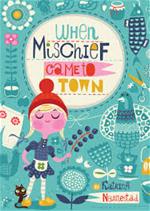 In 1911, 10-year-old Inge Maria Jensen travels by boat from Copenhagen to the island of Bornholm to live with her grandmother. Life is not easy for high-spirited Inge Maria as she faces the challenges of a new home, new neighbors, a new church, and a new school while still grieving the death of her mother. Inge Maria is going to have to do chores on the farm and attend to lessons on manners from stern Grandmother and follow the tedious rules of proper behavior at Svaneke Folk School. Inge Maria definitely has a talent for getting into mischief. She has a bucket-kicking competition with Levi the donkey that leaves Henry the turkey unconscious from a head bonking. She joins the rough-and-tumble of the boys on the “No Girls Allowed” area of the schoolyard. She makes the mistake of hiding in the stinky smokehouse where herring is cured when she runs away from school after confronting the strict schoolmaster with her opinion on all things wrong with the school. However, the mischief that Inge Maria brings to town is just what Grandmother and the community need. Irrepressible Inge Maria will remind readers of mischief-maker Pippi Longstocking.
In 1911, 10-year-old Inge Maria Jensen travels by boat from Copenhagen to the island of Bornholm to live with her grandmother. Life is not easy for high-spirited Inge Maria as she faces the challenges of a new home, new neighbors, a new church, and a new school while still grieving the death of her mother. Inge Maria is going to have to do chores on the farm and attend to lessons on manners from stern Grandmother and follow the tedious rules of proper behavior at Svaneke Folk School. Inge Maria definitely has a talent for getting into mischief. She has a bucket-kicking competition with Levi the donkey that leaves Henry the turkey unconscious from a head bonking. She joins the rough-and-tumble of the boys on the “No Girls Allowed” area of the schoolyard. She makes the mistake of hiding in the stinky smokehouse where herring is cured when she runs away from school after confronting the strict schoolmaster with her opinion on all things wrong with the school. However, the mischief that Inge Maria brings to town is just what Grandmother and the community need. Irrepressible Inge Maria will remind readers of mischief-maker Pippi Longstocking.
Ages 12–14
The Borden Murders: Lizzie Borden and the Trial of the Century. Sarah Miller. 2016. Schwartz & Wade/Random House.
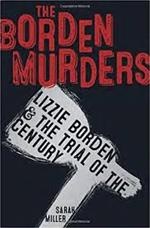 If asked, “What do you know about the Borden murders?” most individuals today would likely respond with “Nothing” or by reciting the verse associated with the murders of Andrew and Abby Borden on August 4, 1892, in Fall River, Massachusetts: Lizzie Borden took an axe, / Gave her mother 40 whacks. / When she saw what she had done, / She gave her father 41. Sarah Miller gives an account of events leading up to Lizzie’s arrest, her imprisonment, her trial, and what came after her acquittal in a readable narrative format. Sidebars include sensational newspaper articles that presented conflicting interviews and edited court transcripts that fueled rumors and divided opinions on whether Lizzie was guilty or innocent of murdering her stepmother and father. Inserts of photographs add interest. Back matter includes Miller’s “Researching the Bordens” notes, sources of quotes, a bibliography of primary sources, books, articles, and online sources, and an index. The Borden Murders reads like a true crime thriller. The book leaves readers not only making their own opinions about Lizzie’s guilt or innocence but also considering what might have happened if the murders had been committed in the 21st century with the advances in forensic science and criminal investigation and changes in trial procedures.
If asked, “What do you know about the Borden murders?” most individuals today would likely respond with “Nothing” or by reciting the verse associated with the murders of Andrew and Abby Borden on August 4, 1892, in Fall River, Massachusetts: Lizzie Borden took an axe, / Gave her mother 40 whacks. / When she saw what she had done, / She gave her father 41. Sarah Miller gives an account of events leading up to Lizzie’s arrest, her imprisonment, her trial, and what came after her acquittal in a readable narrative format. Sidebars include sensational newspaper articles that presented conflicting interviews and edited court transcripts that fueled rumors and divided opinions on whether Lizzie was guilty or innocent of murdering her stepmother and father. Inserts of photographs add interest. Back matter includes Miller’s “Researching the Bordens” notes, sources of quotes, a bibliography of primary sources, books, articles, and online sources, and an index. The Borden Murders reads like a true crime thriller. The book leaves readers not only making their own opinions about Lizzie’s guilt or innocence but also considering what might have happened if the murders had been committed in the 21st century with the advances in forensic science and criminal investigation and changes in trial procedures.
Ages 15+
The Steep and Thorny Way. Cat Winters. 2016. Amulet/Abrams.
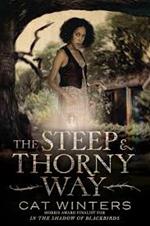 In the small town of Elson, OR, in the early 1920s, life is troubling for Hanalee Denney, the 16-year-old biracial child of an African American man and a white mother. When Joe Adder, the teen who was convicted for killing her father in a drunk-driving accident, returns from prison, Hanalee (with pistol in hand) confronts him. Joe professes his innocence and tells Hanalee he suspects that Clyde Konig, the town’s white doctor and her new stepfather, poisoned her father when he was called in to treat him. Against the backdrop of a small town in which the livelihood of many depends on bootlegging and the Ku Klux Klan is fueling racism and prejudice, Hanalee persistently seeks the truth (with the guidance of the ghost of her father and the help of Joe) as too is responsible for her father’s death. In doing so she uncovers a web of community secrets. This is historical fiction at its best. The inclusion of archival photographs of the period, a “Post-1923 Changes to Oregon Laws” section, and an author’s note on her approach to plotting and characterization and use of Hamlet as a template for the novel enriches the reading experience.
In the small town of Elson, OR, in the early 1920s, life is troubling for Hanalee Denney, the 16-year-old biracial child of an African American man and a white mother. When Joe Adder, the teen who was convicted for killing her father in a drunk-driving accident, returns from prison, Hanalee (with pistol in hand) confronts him. Joe professes his innocence and tells Hanalee he suspects that Clyde Konig, the town’s white doctor and her new stepfather, poisoned her father when he was called in to treat him. Against the backdrop of a small town in which the livelihood of many depends on bootlegging and the Ku Klux Klan is fueling racism and prejudice, Hanalee persistently seeks the truth (with the guidance of the ghost of her father and the help of Joe) as too is responsible for her father’s death. In doing so she uncovers a web of community secrets. This is historical fiction at its best. The inclusion of archival photographs of the period, a “Post-1923 Changes to Oregon Laws” section, and an author’s note on her approach to plotting and characterization and use of Hamlet as a template for the novel enriches the reading experience.
Summer Days and Summer Nights: Twelve Love Stories. Stephanie Perkins (Ed.). 2016. St. Martin’s Griffin/St. Martin’s.
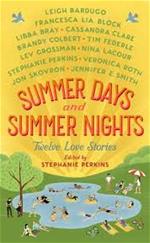 Twelve popular contemporary authors—Leigh Bardugo, Nina LaCour, Libba Bray, Francesca Lia Block, Stephanie Perkins, Tim Federle, Veronica Roth, Jon Skovron, Brandy Colbert, Cassandra Clare, Jennifer E. Smith, and Lev Grossman—contribute well-crafted short stories for this anthology. Whether the genre is realistic fiction, fantasy, or science fiction and whether the teens who find love do so in expected or unexpected ways and settings, all the stories feature protagonists with distinct voices navigating life-changing summertime encounters. The collection is a balance of stories that are heartfelt, humorous, and haunting. Teens will not be able to stop with the reading of just one of these stories; they are likely to keep reading day and night until they reach the end of the book. Seeking out other works by these authors is a terrific way to extend the pleasures of summer reading.
Twelve popular contemporary authors—Leigh Bardugo, Nina LaCour, Libba Bray, Francesca Lia Block, Stephanie Perkins, Tim Federle, Veronica Roth, Jon Skovron, Brandy Colbert, Cassandra Clare, Jennifer E. Smith, and Lev Grossman—contribute well-crafted short stories for this anthology. Whether the genre is realistic fiction, fantasy, or science fiction and whether the teens who find love do so in expected or unexpected ways and settings, all the stories feature protagonists with distinct voices navigating life-changing summertime encounters. The collection is a balance of stories that are heartfelt, humorous, and haunting. Teens will not be able to stop with the reading of just one of these stories; they are likely to keep reading day and night until they reach the end of the book. Seeking out other works by these authors is a terrific way to extend the pleasures of summer reading.
Carolyn Angus is former director of the George G. Stone Center for Children's Books, Claremont Graduate University, in Claremont, CA.
These reviews are submitted by members of the International Literacy Association's Children's Literature and Reading Special Interest Group (CL/R SIG) and are published weekly on Literacy Daily.